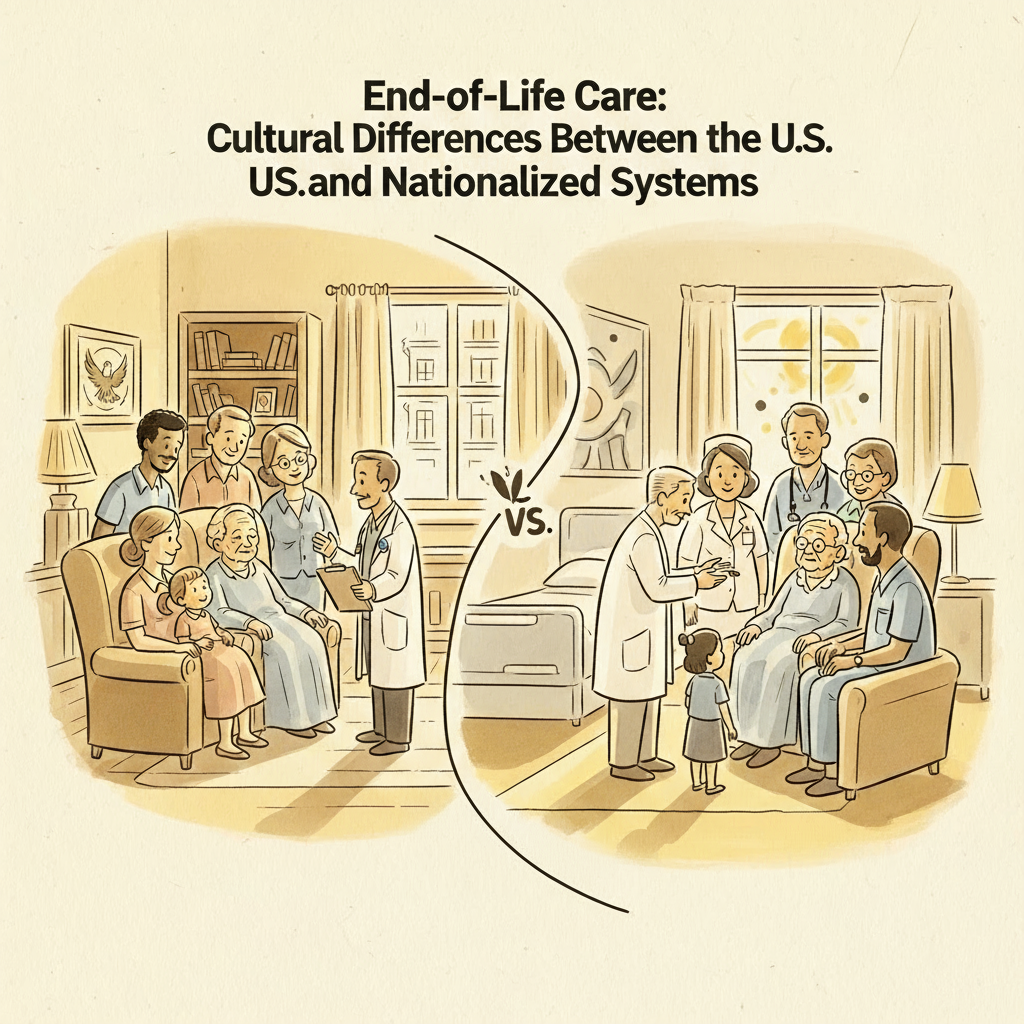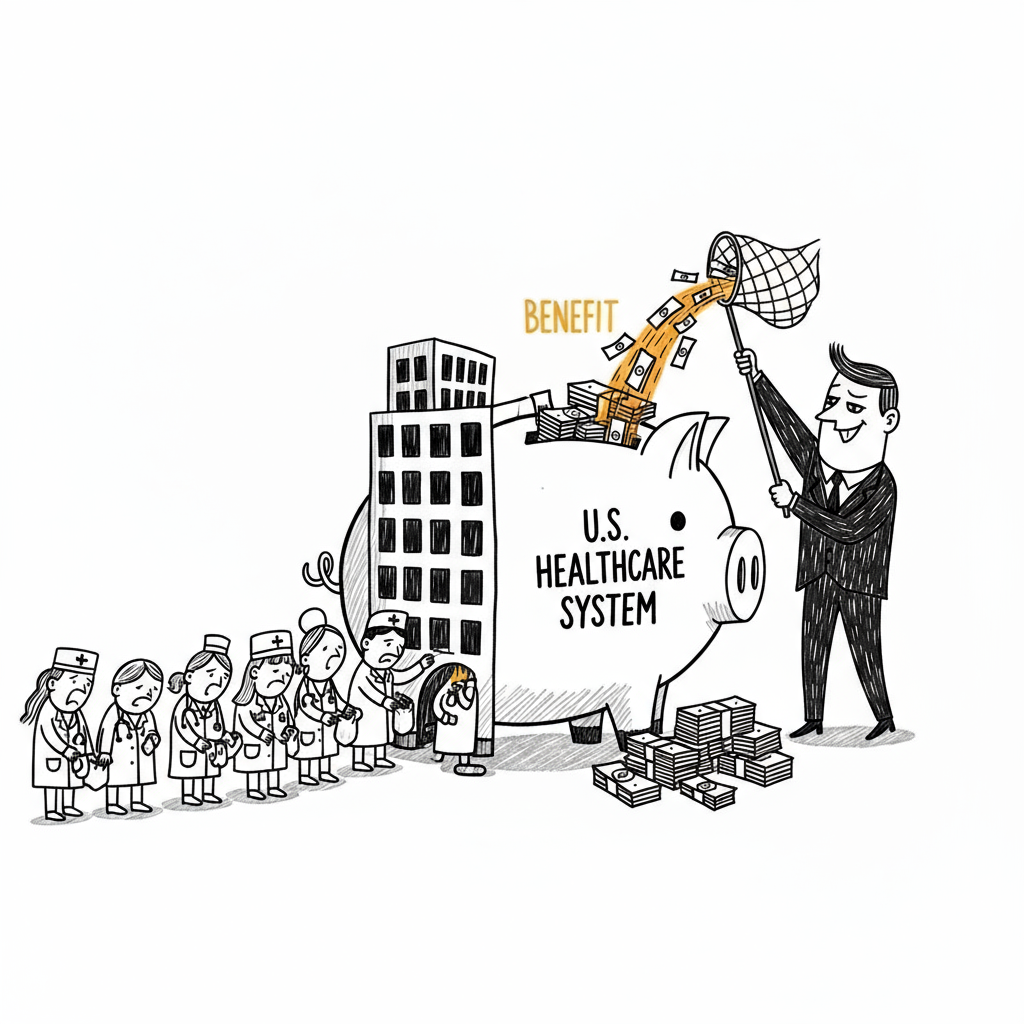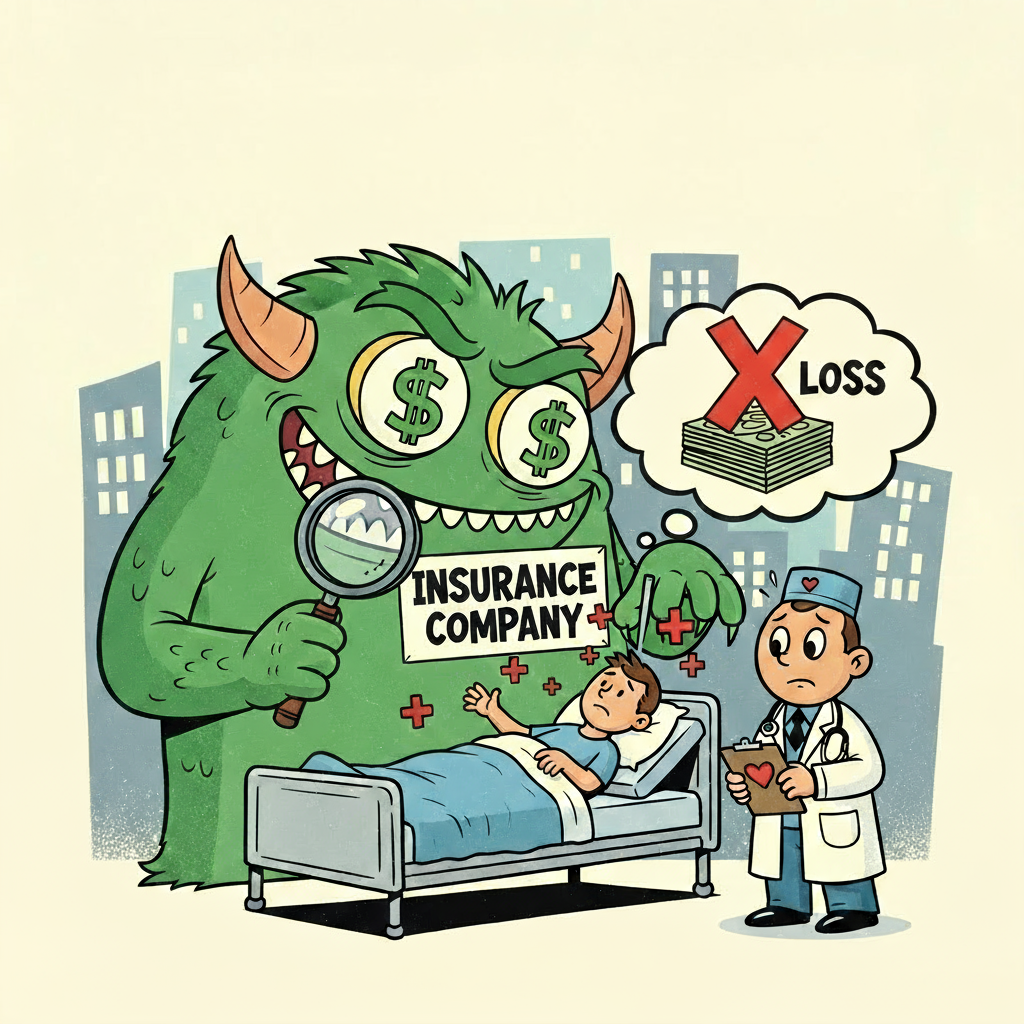
End-of-Life Care: Cultural Differences Between the US and Nationalized Systems
Doug Jorgensen
March 7, 2025
Introduction: The Most Difficult Conversation in Medicine
Few topics in healthcare are as emotionally charged—or as culturally revealing—as how we handle end-of-life care.
The differences between the United States and countries with nationalized systems aren’t just about funding or policy. They reflect deeper values about life, death, and what it means to provide “the best” care.
How a nation treats its dying says as much about its healthcare system as how it treats its health.
The US Approach: Fight to the Finish
In the United States:
- Aggressive interventions are common, even in the final weeks or days of life.
- Patients and families often expect every possible measure to be taken, regardless of cost or likelihood of success.
- Legal and liability concerns can drive providers to recommend interventions rather than risk being accused of “doing nothing.”
This cultural inclination is reinforced by:
- Private insurance incentives that reimburse for procedures and hospital stays.
- Technology availability, with easy access to advanced interventions.
- Emphasis on autonomy, allowing patients or families to request treatments even if medical benefit is minimal.
Nationalized Systems: Acceptance and Allocation
In countries with nationalized healthcare:
- There is often greater acceptance of limiting aggressive care when the likelihood of meaningful recovery is low.
- Resource allocation plays a role—prolonging life at any cost for one patient may mean fewer resources for others.
- Palliative and hospice care are emphasized earlier in the process.
For example:
- In the UK’s NHS, guidelines may recommend against certain high-cost treatments for terminal patients if the expected extension of life is minimal.
- In Canada, the shift to comfort-focused care may happen sooner, with more robust palliative service integration.
The Role of Culture
The differences aren’t purely systemic—they’re cultural.
- American culture places high value on individual choice, even if it means pursuing low-probability interventions.
- Many European cultures emphasize quality of life and collective responsibility for resource use.
These cultural norms shape public policy, reimbursement structures, and patient expectations. Life and death are intrinsically linked. However, in a nation preoccupied with youth and appearance, expectations for end-of-life care often reflect a desire to avoid death at all costs. In contrast, other cultures view death, while sorrowful, as a natural and accepted part of life.
The Emotional Reality for Providers
In both systems, providers often struggle with:
- Balancing medical judgment with patient/family wishes
- Communicating prognosis in a way that’s honest yet compassionate
- Managing moral distress when treatments feel futile
The Cost Implications
End-of-life care accounts for a significant portion of healthcare spending in the US—some estimates place it at 10–12% of total expenditures.
In nationalized systems, spending is more tightly controlled, and cost-effectiveness evaluations play a larger role in decision-making.
Moving Toward Better Conversations
Regardless of the system, better end-of-life care starts with:
- Advance Care Planning – Encouraging patients to define their wishes early.
- Clear Communication – Honest discussions about prognosis and likely outcomes.
- Cultural Sensitivity – Understanding how values shape preferences for care.
- Integration of Palliative Services – Making comfort care a parallel, not secondary, option.
Final Thoughts: Values Before Policies
Any discussion of reforming end-of-life care must begin with values. Individual patients and their families will hold diverse values. Familial disagreements about end-of-life care are common, even among close relatives.
Yet, if a society values maximal intervention for every patient, it must be willing to bear the cost—financial and emotional.
If it values quality of life and equitable resource distribution, it must accept the limits that come with that choice.
Our collective values, both in life and death, are reflected in the systems we create.
About the Author
Douglas J. Jorgensen, DO, CPC, FAAO, FACOFP
Dr. Doug is a physician, consultant, and national educator on healthcare policy and regulatory compliance. He works with healthcare systems to align clinical practice with patient values and systemic realities.


